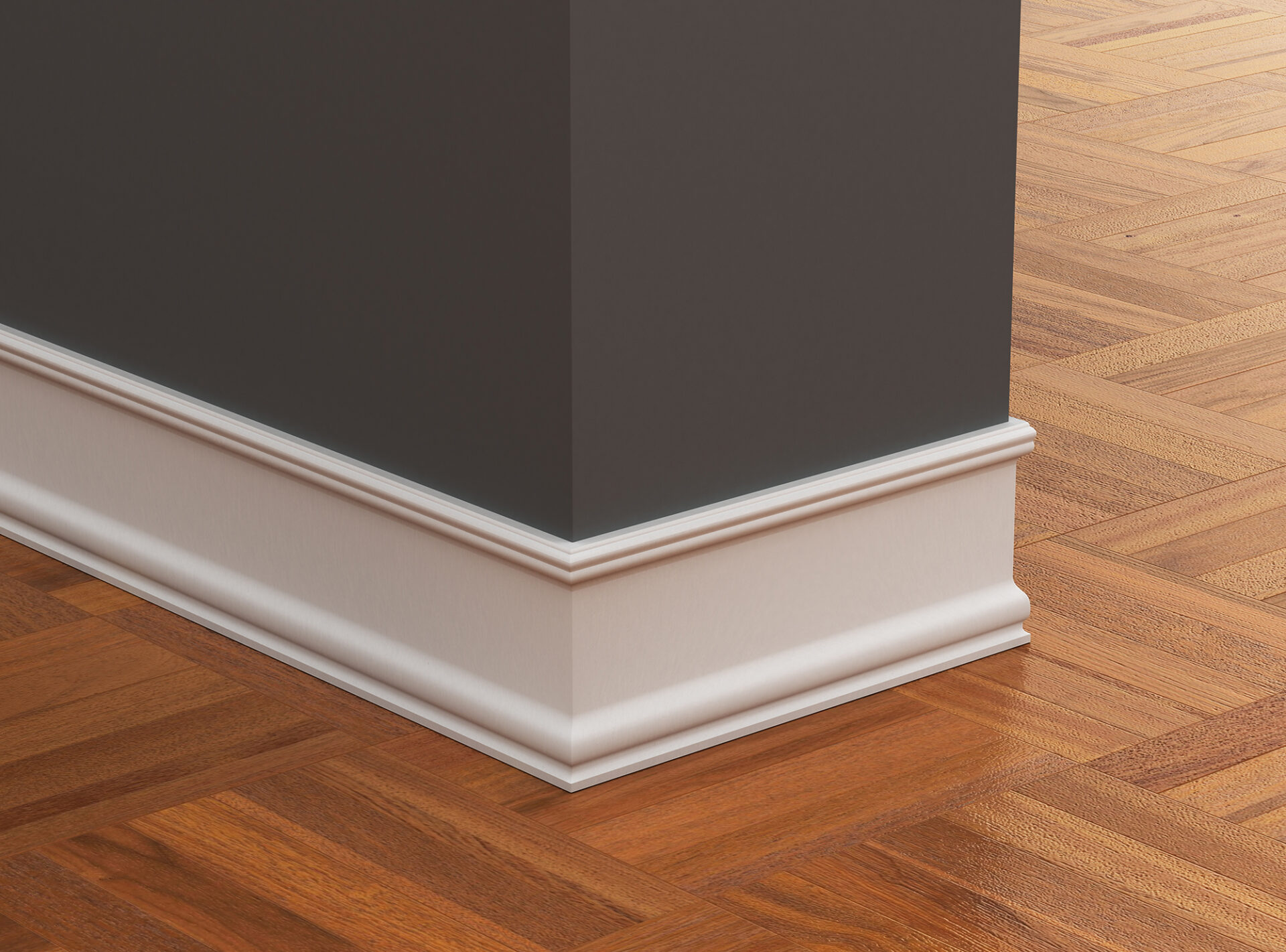What is Decorative Baseboard Trim?
Decorative baseboard trim serves as a stylish transition between your walls and floors. While its primary function is to cover the gap between the two, it has evolved into a crucial element of interior design, adding character and charm to any space. As someone who loves home decor, I can attest to how the right trim can entirely transform a room.
Types of Decorative Baseboard Trim
Understanding the different types of decorative baseboard trim is vital for choosing the one that best fits your home’s style. Here are some of the most common options:
Crown Molding
Crown molding is often used in conjunction with baseboards for a more polished look. It adds height and elegance, particularly in rooms with high ceilings.
Modern Baseboards
With clean lines and minimalistic designs, modern baseboards emphasize a contemporary aesthetic. These are perfect for sleek, modern homes.
Victorian and Traditional Trim
Victorian trims are elaborate, featuring intricate patterns and designs that enhance the classical feel of older homes or traditional décors.
Custom-Made Trim
If you have a specific vision, custom-made trim can be designed to fit your unique style and dimensions.
Choosing the Right Decorative Baseboard Trim
When selecting baseboard trim, consider the following:
- Style of Your Home: Choose a trim that complements the overall architecture and design.
- Room Function: Different rooms may benefit from different styles; for example, more ornate designs might suit a formal living room, while simpler ones are better for casual spaces.
- Height and Width: The scale of your trim should be proportional to the room size. Taller baseboards can create an illusion of height in small rooms.
- Material: Wood, MDF, and PVC are popular options, each with its pros and cons.
Comparing Materials for Baseboard Trim
| Material | Pros | Cons |
|---|---|---|
| Wood | Durable, customizable, aesthetically pleasing | Can warp, expensive |
| MDF (Medium Density Fiberboard) | Cost-effective, smooth finish | Not as durable as wood, can be susceptible to moisture |
| PVC | Water-resistant, lightweight | Less traditional appearance, limited styles |
Pros and Cons of Decorative Baseboard Trim
Pros
- Enhances Aesthetic Appeal: Baseboard trim can add a finished look to your room.
- Conceals Imperfections: It covers gaps and imperfections where walls meet floors.
- Increases Property Value: Well-chosen trim can improve your home’s resale value.
- Creative Design Opportunities: Offers a way to express your style through various designs.

Cons
- Installation Time: Proper installation can be time-consuming.
- Costs: Quality materials can be expensive.
- Maintenance: Some materials may require more upkeep than others.
Installation of Decorative Baseboard Trim
Installing baseboard trim can seem daunting, but with the right tools and procedure, it can be a rewarding DIY project. Here’s a step-by-step guide:
Tools You Will Need
- Pry bar
- Measuring tape
- Miter saw
- Level
- Caulking gun
- Nail gun or hammer
- Wood glue
Step-by-Step Installation Process
- Measure the length of each wall and cut the trim boards to size at a 45-degree angle.
- Using a nail gun or hammer, secure the trim to the wall.
- Fill any nail holes with wood filler.
- Apply caulk along the top edge where the trim meets the wall for a seamless finish.
- Finally, paint or stain your trim to match your decor.

Personal Experience: My Journey with Baseboard Trim
I vividly remember when I first moved into my home. The walls were bare, and the floors felt unfinished. I decided to install decorative baseboard trim, and it was a game-changer. I opted for simple, modern boards that complemented my minimalist style.
The installation process was surprisingly straightforward, and I loved the instant transformation it provided. I recommend taking your time to measure accurately and investing in good tools, as it makes the whole process smoother. If you’re debating whether to add baseboard trim, I can wholeheartedly say—go for it! It’s an investment that pays off in visual appeal.
Maintenance Tips for Your Baseboard Trim
To keep your decorative baseboard trim looking fresh, consider the following maintenance tips:
- Cleaning: Regularly dust and wash with a damp cloth to remove dirt and grime.
- Patching: Repair any chips or scratches with wood filler or touch-up paint.
- Repainting: Depending on the material, you may need to repaint or stain every few years.

FAQs About Decorative Baseboard Trim
What is the best material for baseboard trim?
The best material depends on your preferences. Wood is traditional and durable, while MDF offers a cost-effective solution. PVC is ideal for moisture-prone areas.
How tall should baseboard trim be?
The height of baseboard trim typically ranges from 3 to 6 inches. Taller trim works well in spacious rooms, while shorter options suit smaller spaces.
Can I install baseboard trim myself?
Yes! Installing baseboard trim is a doable DIY project with the right tools and patience. Following a step-by-step guide can help simplify the process.
What paint should I use for baseboard trim?
For baseboard trim, a semi-gloss or satin finish is recommended as it’s easy to clean and durable. Choose a color that complements the rest of your decor.
How much does it cost to install baseboard trim?
The cost can vary widely based on materials and room size. Generally, expect to spend between $1 to $8 per linear foot, plus installation fees if you hire a professional.
